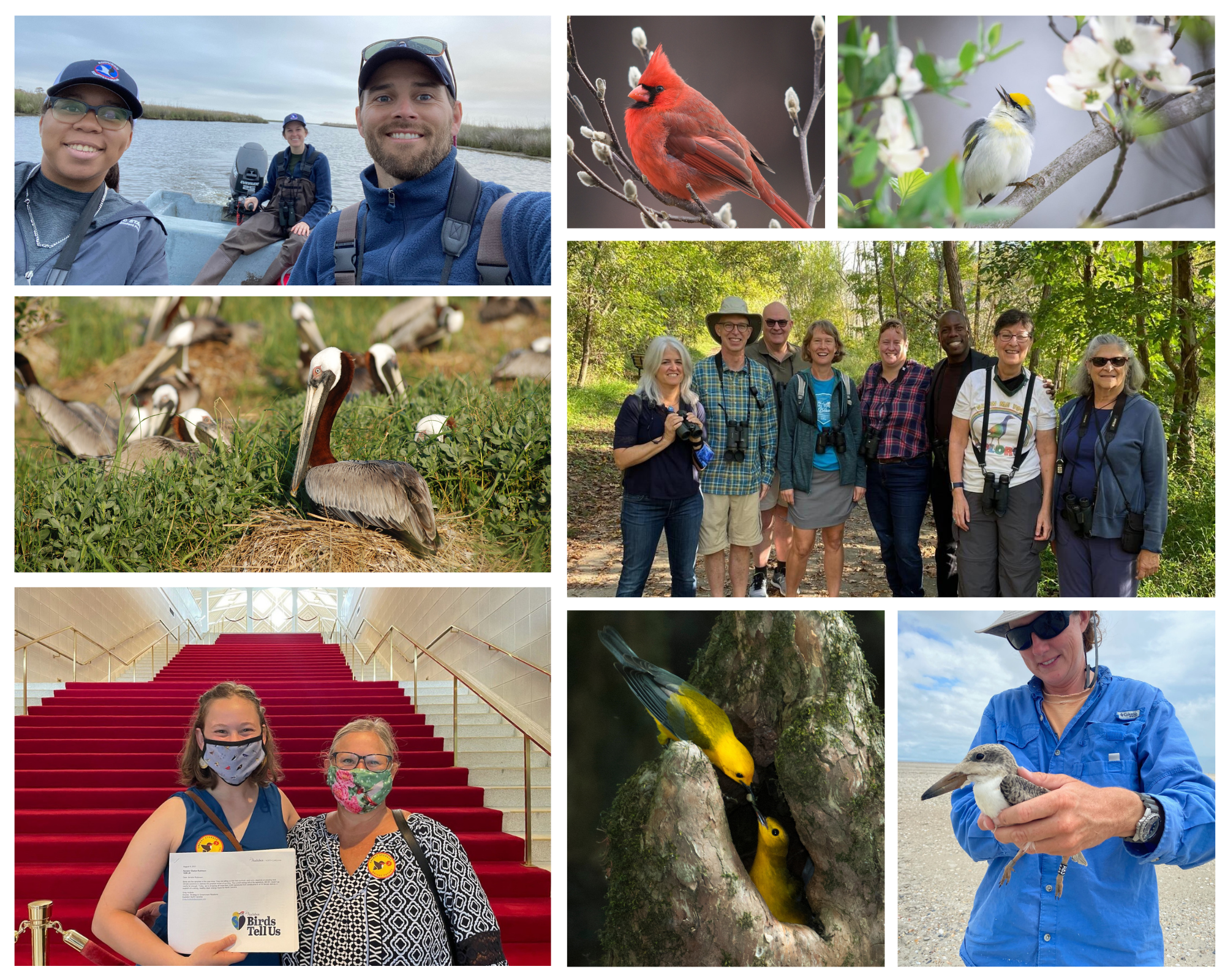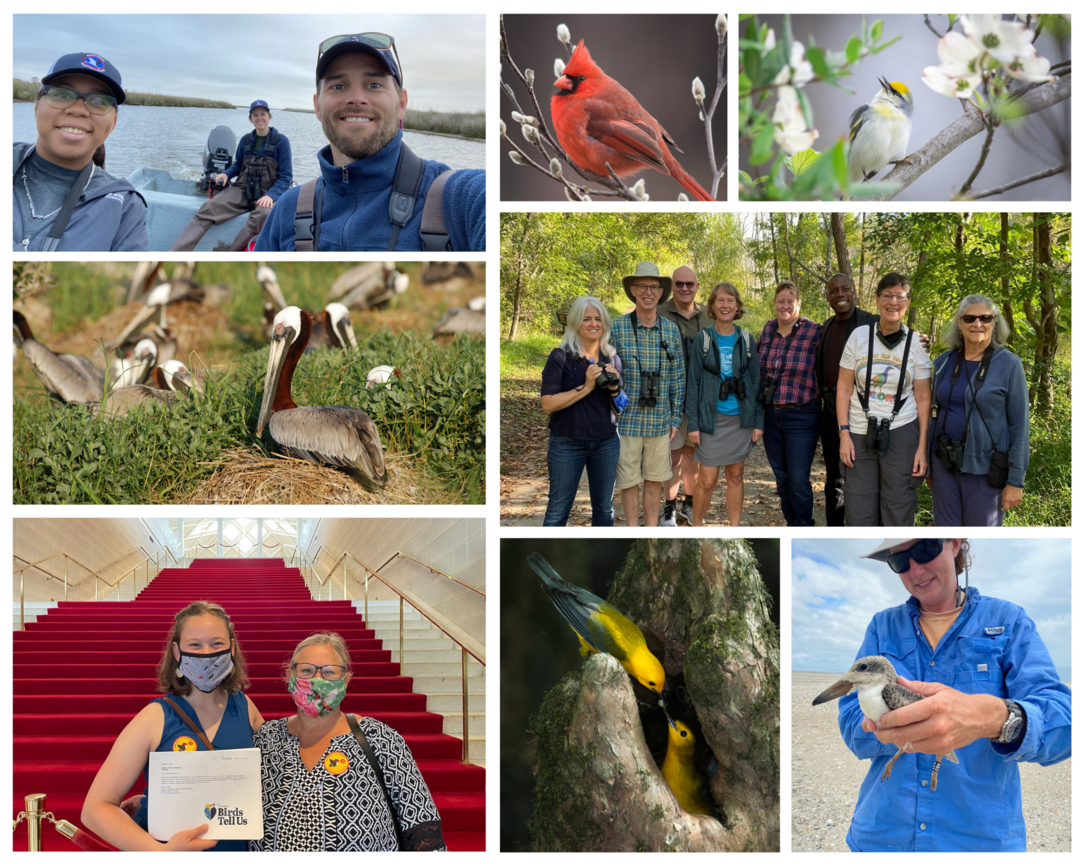From remote barrier islands to the North Carolina General Assembly to the Blue Ridge Mountains, and town halls and backyards in between, Audubon North Carolina took our conservation and advocacy work to new heights in 2021.
We saw our biggest-ever year of engagement, with 7,700 people taking action for birds more than 19,000 times (phone calls, emails, petition signatures, in-person meetings with lawmakers), resulting in a landmark climate bill and historic levels of conservation funding signed into law this fall.
All the while, we broke new ground with our bird science and conservation work, highlighted by a major conservation partnership to protect an undeveloped barrier island.
Get the full recap of our biggest wins for birds below.

We helped pass landmark climate legislation for birds and people
After years of advocacy from Audubon members, North Carolina lawmakers passed a major bipartisan climate bill in October. House Bill 951 gives North Carolina one of the nation’s strongest carbon reduction commitments and requires we reach carbon neutrality by 2050.
The legislation came after Audubon’s grassroots network spoke up for birds at a level we’ve never seen before in North Carolina. On the climate bill alone, we delivered more than 7,000 messages to state lawmakers. Climate change is the biggest threat to birds and people alike, and this bill will help usher in a clean energy future for our state. Learn more.
Audubon also helped two priority bills clear the House and Senate, respectively, setting the stage for full passage in the near future.
House Bill 367 would protect birds and help heirs property owners hold onto their family land. It passed the House with a bipartisan majority last summer, after a year of hard work from Audubon advocates and partners like the Black Family Land Trust. This legislation addresses the single largest cause of Black family land loss—and wealth—in the Southeast.
Senate Bill 628, filed by Senator Bill Rabon, requires bird-friendly native plants for landscaping on state property and passed the Senate with a near-unanimous vote. More on both bills here.
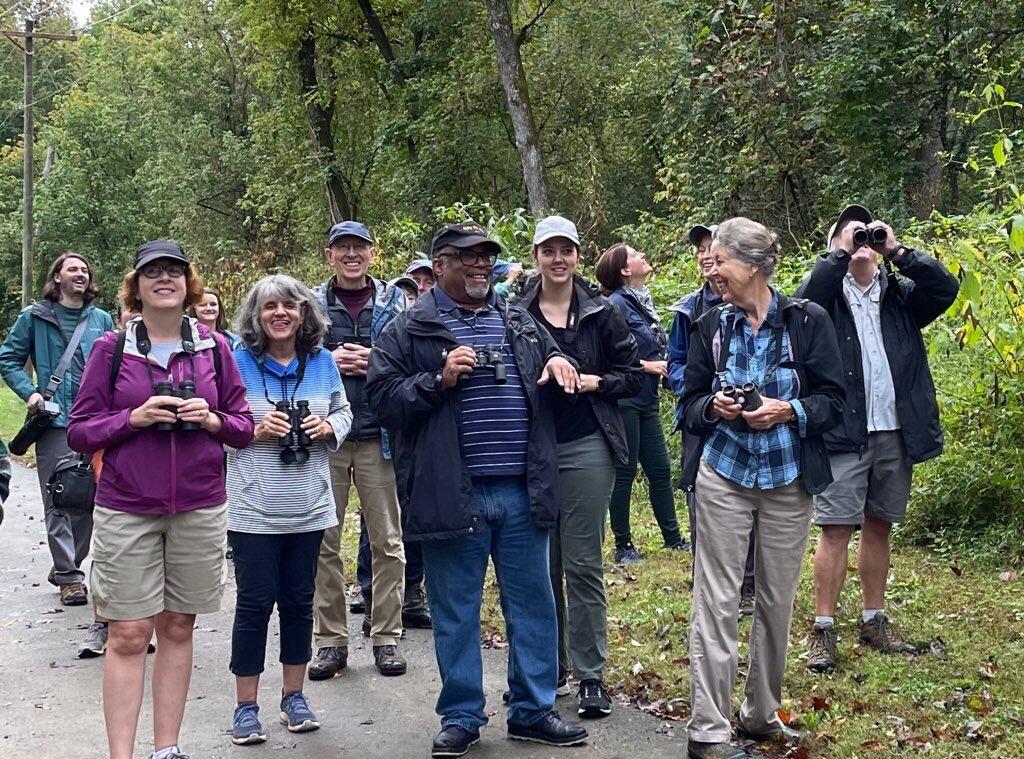
We grew our grassroots power and helped advocates organize their chapters
Across the state, Audubon chapters grew their advocacy capacity in new ways, helping to organize our busiest-ever Advocacy Day (more than 100 members met with 41 lawmakers on Zoom). Chapter and advocacy leaders didn't stop there. In the weeks and months after, they organized bird walks with local lawmakers from Asheville to Raleigh and gathered thousands of petition signatures. Today, 8 of 9 chapters have Advocacy chairs dedicated to coordinating this kind of collective action at the local and state level.
Audubon is local everywhere. Empowering chapters to take bigger, bolder action for birds is key to our success.
We secured a major conservation partnership to protect one of North Carolina’s last undeveloped barrier islands still under private ownership
Together with the Coastal Land Trust, Audubon completed a major conservation partnership that will forever protect Hutaff Island, one of North Carolina’s last privately owned, undeveloped barrier islands.
Hutaff is a 2-mile long ribbon of pristine beach and saltmarsh that provides critical habitat for vulnerable beach-nesting birds like Black Skimmers and Least Terns and thousands of migrating species, including federally threatened Piping Plovers and Red Knots, as well as nesting sea turtles. Read more about how protecting this barrier island helps birds and people.
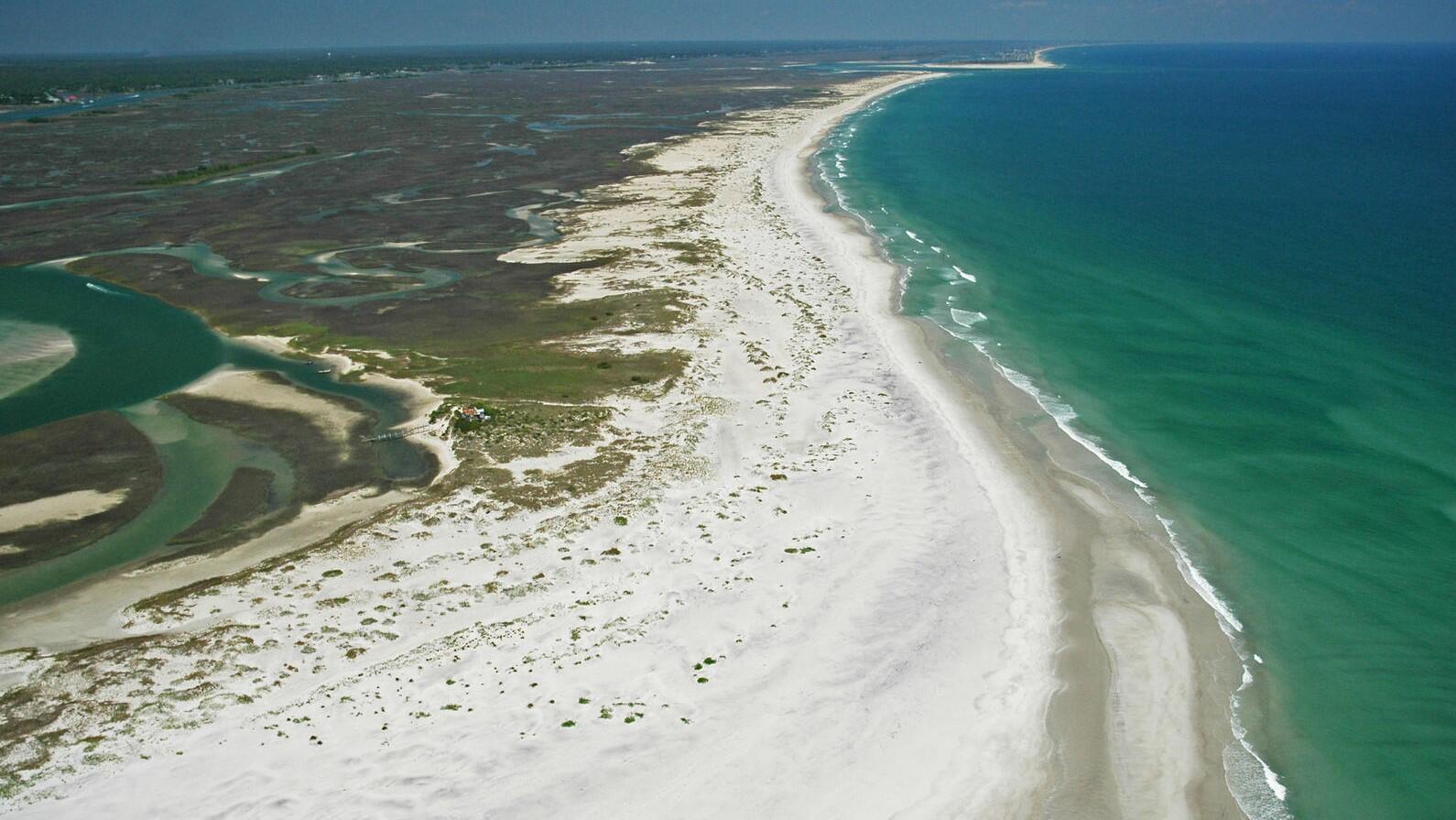
We charted a new path for Currituck Sound with a major grant and marsh conservation plan
Through Audubon’s Coastal Resilience Hub at our Donal C. O’Brien Jr. Sanctuary at Pine Island, we led the Currituck Sound Coalition on the release of a landmark Marsh Conservation Plan that offers a blueprint for protecting and restoring this invaluable coastal ecosystem for birds and people.
Shortly before the release of the plan, we secured a $210,000 grant from the National Fish and Wildlife Foundation to fund innovative marsh restoration pilot projects at Pine Island, located on the sound.
The marsh conservation plan and new funding, combined with a newly launched, years-long secretive marsh bird survey at Pine Island, are helping us chart a healthy, resilient future for the sound.

We helped secure historic investments in conservation and flood resilience in North Carolina’s budget
Sine we organized our first Advocacy Day five years ago, Audubon advocates have met with lawmakers every year to speak up for conservation funding. All of that advocacy paid off this year when lawmakers passed a budget that includes historic investments in flood resilience and the highest level of state funding for conservation in over a decade.
The budget includes a combined $265 million over two years for the North Carolina Land and Water Fund and the Parks and Recreation Trust Fund. Last year, the funds totaled $30 million. The budget also includes more than $40 million for flood mitigation and resilience. The funds will help restore and protect natural landscapes that reduce flood risk and provide birds with healthy places to live. Learn more.
We launched new coastal bird research, all while continuing to protect 40 percent of North Carolina’s coastal nesting waterbirds
This summer we started a first-of-its-kind research project on American Oystercatchers, using lightweight GPS technology, to determine how these birds use their habitat. We also ramped up our banding work with Black Skimmers with new partners at Cape Lookout National Seashore, in response to a steep decline in our state's breeding skimmer population.
All the while, we continued our on-the-ground habitat management, monitoring our network of coastal sanctuaries that ensure the survival of 40 percent of North Carolina’s coastal nesting waterbirds. After a pandemic pause, nearly 50 Beach Bird Stewards returned to volunteer at Wrightsville Beach. As a result of their work, our Black Skimmer colony, already the largest in the state, increased to 166 pairs.
Across our sanctuary system, the nesting season was a success, with population numbers holding strong for many species. Read more.
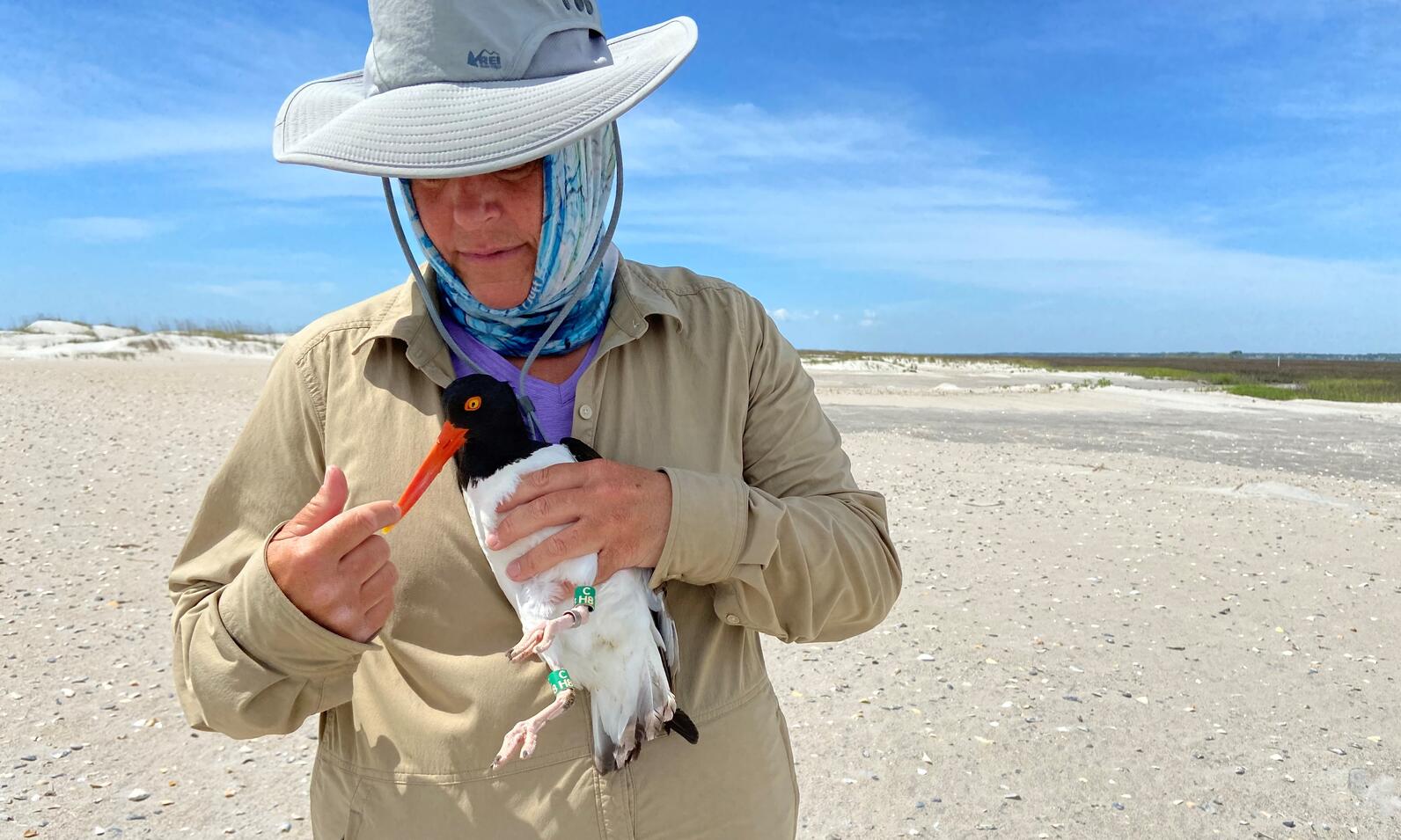
Our chapters passed bird-friendly ordinances in towns and counties across the state
The advocacy work of Audubon chapters took flight in 2021, with big wins for birds from Boone to Raleigh.
-
Greensboro: T. Gilbert Pearson Audubon Society passed a Native Plants Week proclamation and changed ordinances to require native plants for certain development projects.
-
Raleigh: Wake Audubon secured an agreement with the city to turn off municipal building lights to protect migrating birds.
-
Durham: New Hope Audubon Society helped pass major bird-friendly changes to the city and county landscaping policy.
-
Boone: High Country Audubon Society worked reaffirmed the town as a Bee City USA Affiliate which requires the adoption of a host of pollinator-friendly commitments.
-
Momentum is strong: Chapter leaders are already working with the towns of Apex, Cary, and Matthews, as well as the cities of Asheville and Charlotte, on lights out and native plants resolutions and ordinances.
Read the full recap of chapter wins here.
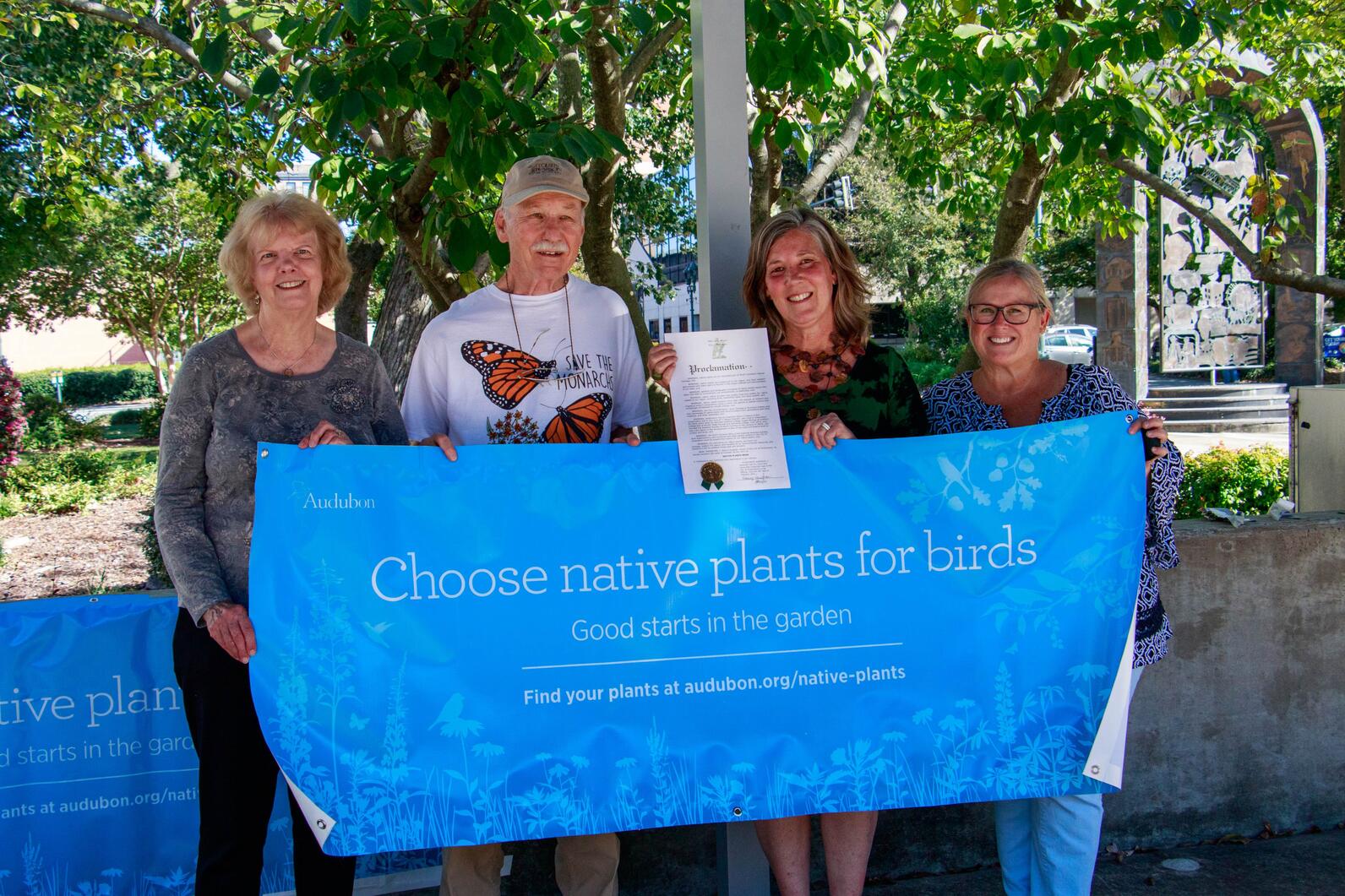
We launched a new coalition and took action to support responsible offshore wind energy
Climate change is the biggest threat to birds and people alike. That’s why we helped launch a new coalition—Offshore Wind for North Carolina—to advance the industry responsibly, in a way that protects birds and helps our state capitalize on the immense offshore wind resources just off our coast. Already, Audubon advocates have been speaking up and signing petitions to support responsible offshore wind energy.
We grew our bird-friendly forestry work with landowners to touch 60,000 acres across North Carolina
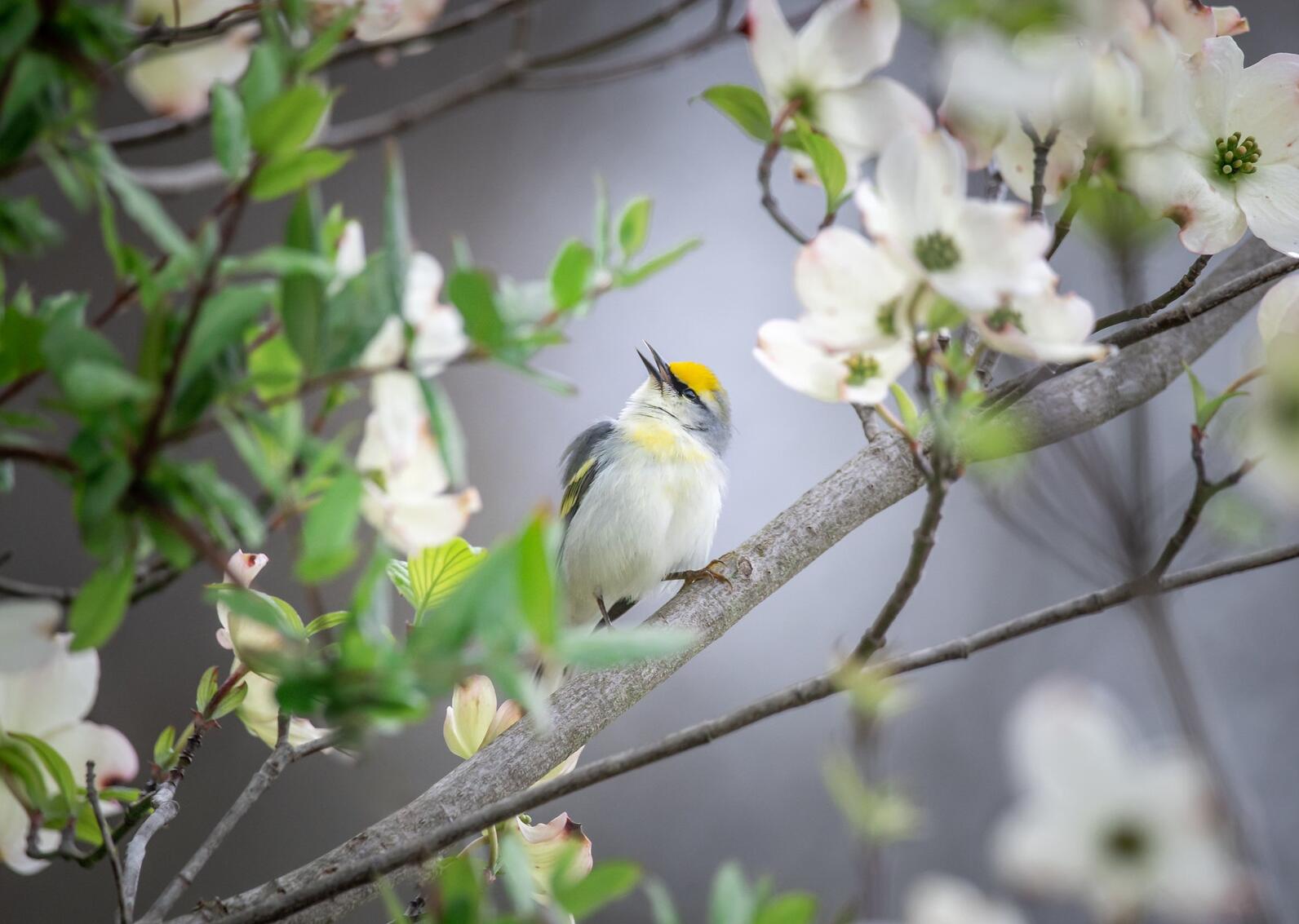
Our Working Lands program grew to promote bird-friendly land management with nearly 400 landowners, responsible for a combined 60,000 acres across North Carolina. As part of this work, we partnered with the Forest Stewards Guild, the N.C. Forest Service, and others to host a special workshop on stewarding bottomland hardwood forests for birds and people. We also continued to be the voice for birds as forest managers craft a new plan for the Nantahala and Pisgah national forests, which span more than 1 million acres of our state’s most treasured public lands.
We are also spreading the word of forest stewardship for birds through ForestHer NC, which now reaches more than 1,400 women landowners. Audubon is an inaugural partner, along with the North Carolina Forest Service and North Carolina Wildlife Resources Commission.

